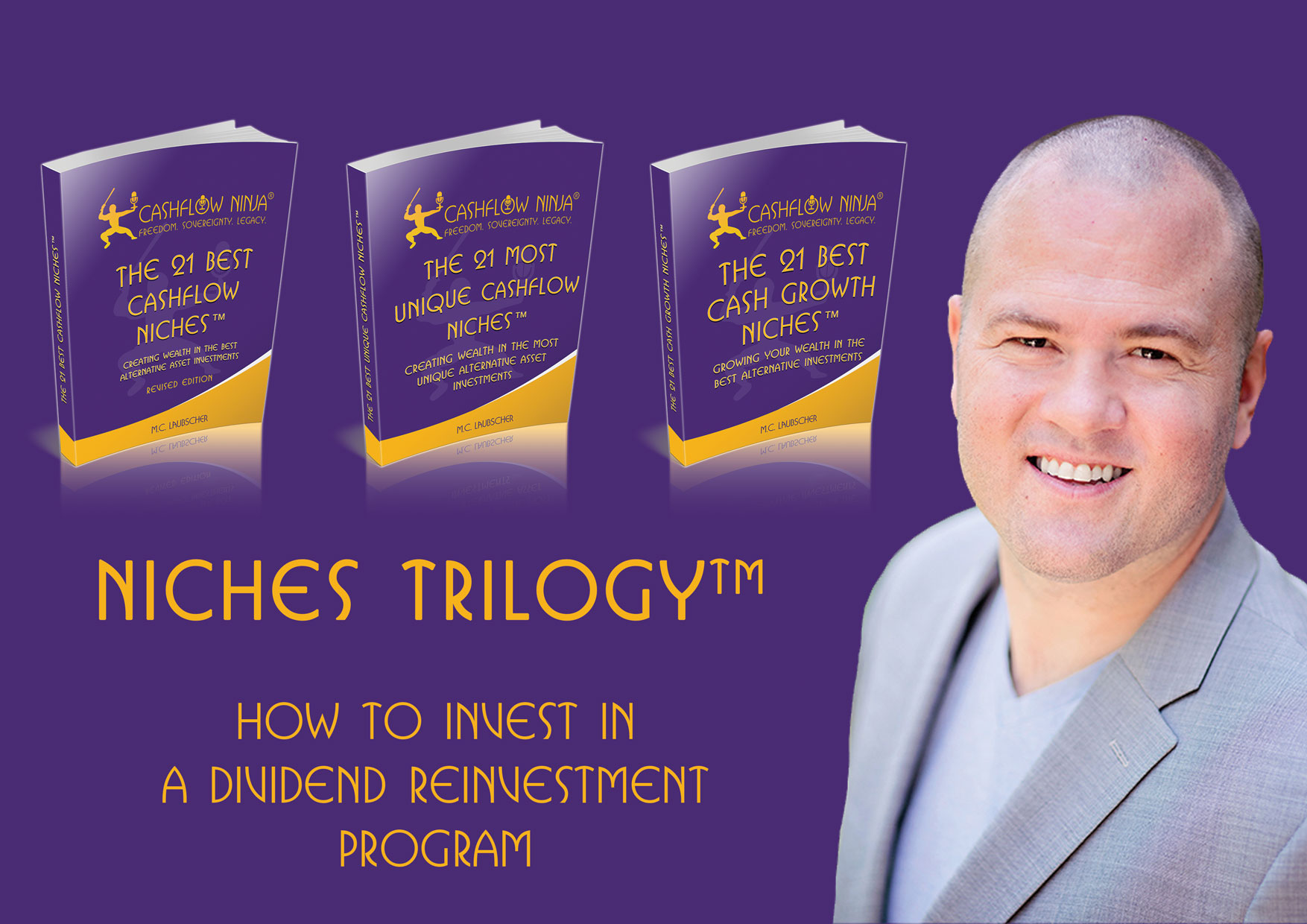
A Dividend Reinvestment Program (DRIP) is an investment plan offered by a company that allows shareholders to reinvest their cash dividends by purchasing additional shares or fractional shares of the company’s stock on the dividend payment date.
Instead of receiving dividends in cash, shareholders who participate in a DRIP have their dividends automatically reinvested to purchase additional company stock shares. The company or its transfer agent often manages this process. Shares are usually purchased on the open market or directly from the company, and in some DRIPs, the company may offer shares at a discount to the current market price. DRIPs allow the purchase of fractional shares, meaning every cent of the dividend is put to work, increasing the number of shares owned over time. Many DRIPs have low or no fees for purchasing additional shares, making them a cost-effective way to build an investment over time.
By reinvesting dividends, investors can take advantage of compounding returns. This means dividends start earning their own dividends, potentially increasing the overall return on investment over time. DRIPs facilitate dollar-cost averaging, where investments are made regularly regardless of the share price. This strategy can reduce the impact of volatility and lower the average cost per share over time. Automatic reinvestment is a convenient way to grow an investment without having to make frequent purchase decisions or manually reinvest dividends. Some companies offer shares at a discount through their DRIP, providing an additional incentive for investors to reinvest dividends.
There are some disadvantages to DRIPs. Continuously reinvesting dividends in the same company can lead to over-concentration in a single stock, increasing risk if the company’s performance declines. Even though dividends are reinvested, they are still subject to income tax in the year they are paid, which can result in a tax liability without receiving cash to cover it. If the company’s stock does not perform well, reinvesting dividends might result in lower overall returns compared to other investment opportunities. Over time, the accumulation of fractional shares and reinvested dividends can complicate record-keeping and tracking of the cost basis for tax purposes.
Why Invest In DRIPs
Investors choose to invest in Dividend Reinvestment Programs (DRIPs) for several compelling reasons, including the potential for compounding returns, convenience, cost savings, and the ability to practice dollar-cost averaging.
DRIPs enable investors to take advantage of compounding returns by automatically reinvesting dividends to purchase additional shares. Over time, these reinvested dividends start earning their own dividends, leading to exponential growth in the investment. This compounding effect can significantly increase the overall return on investment.
Automatic reinvestment of dividends simplifies the investment process. Investors do not need to reinvest their dividends or decide how to allocate them manually. This hassle-free approach is particularly appealing for long-term investors who prefer a “set it and forget it” strategy.
Many DRIPs come with low or no fees for purchasing additional shares. This cost-effective method of building an investment allows investors to maximize their returns by minimizing transaction costs. Additionally, some companies offer shares at a discount through their DRIP, providing further financial benefits.
DRIPs facilitate dollar-cost averaging by making regular investments regardless of the share price. This strategy helps investors reduce the impact of market volatility and lowers the average cost per share over time. By investing consistently, investors can mitigate the risks associated with market timing.
DRIPs allow the purchase of fractional shares, meaning every cent of the dividend is reinvested. This efficient use of dividends ensures that no money is left idle and every bit of the dividend contributes to growing the investment.
DRIPs provide a disciplined approach to investing for long-term investors. By consistently reinvesting dividends, investors can build significant wealth over time. This method is particularly useful for retirement planning and other long-term financial goals.
Investing in a Dividend Reinvestment Program offers multiple benefits such as compounding returns, convenience, cost savings, dollar-cost averaging, and the ability to purchase fractional shares. These advantages make DRIPs an attractive option for investors looking to grow their wealth over the long term while simplifying their investment strategy.
The DRIPs Ecosystem
The Dividend Reinvestment Program (DRIP) ecosystem encompasses various elements, including the types of DRIPs, how they are managed, the benefits and drawbacks for investors, and the broader market implications. There are two main types of DRIPs: company-operated and brokerage-operated. Company-operated DRIPs are directly managed by the issuing company or their transfer agent and often offer features such as purchase discounts on additional shares, low or no fees, and the ability to buy fractional shares. Brokerage-operated DRIPs, on the other hand, are offered by many brokerage firms that automatically reinvest dividends into additional shares of the stock, providing more flexibility and allowing investors to manage multiple DRIPs from different companies within one account.
To enroll in a DRIP, shareholders typically need to sign up through the company’s transfer agent or their brokerage. Once enrolled, dividends are automatically reinvested to purchase additional shares or fractional shares. Shares are bought either directly from the company or on the open market, with some company-operated DRIPs offering shares at a discount to the current market price to incentivize participation. Company-operated DRIPs often have lower fees compared to brokerage-operated DRIPs, encouraging participation by reducing transaction costs.
The benefits of DRIPs include compounding returns, dollar-cost averaging, convenience, and cost efficiency. Reinvesting dividends allows for compounding returns over time, while dollar-cost averaging helps mitigate the impact of market volatility. Automated reinvestment simplifies the investment process, and low or no fees make DRIPs a cost-effective way to build an investment. However, there are drawbacks, such as over-concentration in a single stock, tax implications, and complexity in record-keeping due to numerous small transactions.
DRIPs can also have broader market implications. They contribute to market stability by providing a steady source of demand for a company’s shares, irrespective of market conditions. DRIPs promote a long-term investment culture among shareholders, aligning their interests with the company’s long-term growth and performance. Institutional investors also use DRIPs to maintain and grow their positions in certain stocks, further stabilizing and supporting stock prices over time.
The DRIP ecosystem provides a structured and efficient way for investors to reinvest their dividends and grow their investments over time. It offers benefits like compounding returns, dollar-cost averaging, and convenience, though it also has potential drawbacks such as over-concentration and tax implications. Understanding the mechanics and implications of DRIPs helps investors make informed decisions about whether to participate in these programs as part of their investment strategy.
How To Generate Income
Investors make money investing in Dividend Reinvestment Programs (DRIPs) through several mechanisms that leverage the power of compounding, cost efficiency, and consistent reinvestment.
Investors benefit from compounding returns by automatically reinvesting dividends to purchase additional shares. Each reinvested dividend buys more shares, which in turn generate their own dividends. Over time, this compounding effect can significantly increase the overall value of the investment. For example, if an investor owns 100 shares of a stock that pays a 4% annual dividend, they will receive four additional shares each year if the dividends are reinvested. These additional shares will also earn dividends, accelerating growth.
DRIPs facilitate dollar-cost averaging by automatically purchasing shares at regular intervals (each dividend payment). This approach smooths out the purchase price over time, reducing the impact of market volatility and potentially lowering the average cost per share. For example, an investor might buy shares at various prices as the stock price fluctuates. Over time, this strategy can achieve a lower average cost than lump-sum investments.
Many DRIPs have low or no fees for purchasing additional shares. This cost efficiency means that more of the investor’s money is put to work, increasing the potential for higher returns. Additionally, some DRIPs offer shares at a discount to the market price, further enhancing value. For example, if a DRIP allows purchasing shares without brokerage fees, an investor saves money on transaction costs, which can be reinvested to buy more shares.
As dividends are continually reinvested, an investor’s number of shares increases. This incremental growth can lead to substantial holdings over a long period, enhancing the investor’s equity position in the company. For example, starting with 100 shares and reinvesting dividends over 20 years can result in owning a significantly larger number of shares, each paying dividends, thereby increasing overall income and value.
While DRIPs focus on reinvesting dividends, the underlying stock can also appreciate in value. If the company grows and its stock price increases, the value of the reinvested shares grows as well, leading to capital gains. For example, if an investor reinvests dividends in a stock that appreciates from $50 to $100 per share, the value of their investment doubles, in addition to the dividends received and reinvested.
How To Lose Money
Investors can lose money in Dividend Reinvestment Programs (DRIPs) through various mechanisms, primarily due to market risks, company-specific risks, and tax implications.
The value of the underlying stock can decline due to broader market conditions, economic downturns, or sector-specific issues. If the stock price falls, the value of the reinvested dividends and the overall investment can decrease. For example, an investor reinvesting dividends in a stock that subsequently drops in value will see a reduction in their worth. During a market downturn, even stocks with solid fundamentals can lose value.
The company issuing the dividends might face financial difficulties, leading to reduced dividend payments or complete suspension of dividends. Poor business performance, management issues, or competitive pressures can negatively impact the stock price. For example, suppose a company cuts its dividend due to declining profits. In that case, investors relying on dividend reinvestment will receive fewer shares, and the stock’s price may also drop, reducing the value of the investment.
Continuously reinvesting dividends into the same stock can lead to over-concentration in a single company. This lack of diversification increases the risk if the company performs poorly. For example, an investor who only reinvests dividends into one company may suffer significant losses if that company’s stock price declines, as opposed to a diversified portfolio where gains in other stocks might offset losses.
Even though dividends are reinvested, they are still subject to income tax in the year they are received. This can result in a tax liability without receiving cash to cover it, potentially forcing investors to sell shares to pay taxes. An investor may owe taxes on reinvested dividends, leading to an unexpected tax bill. If they have to sell shares to pay this bill, they might incur losses if the stock price has fallen.
Managing numerous small transactions from reinvested dividends can complicate record-keeping and tracking the cost basis for tax purposes. This complexity can lead to errors and potential tax issues. For example, an investor might need help to accurately track the cost basis of shares purchased through a DRIP, leading to incorrect tax reporting and potential penalties from the IRS.
Positives & Negatives Of DRIPs
Positives:
- Compounding Returns: Reinvesting dividends allows for compounding, meaning the dividends themselves start earning dividends. This can significantly increase the overall return on investment over time.
- Dollar-Cost Averaging: Regularly purchasing shares with reinvested dividends averages out the purchase price over time, reducing the impact of market volatility.
- Cost Efficiency: Many DRIPs have low or no fees for purchasing additional shares, making it a cost-effective way to grow an investment.
- Convenience: Automatic dividend reinvestment simplifies the investment process, making it easy for investors to grow their holdings without taking additional actions.
- Potential Discounts: Some companies offer shares at a discount through their DRIP, providing investors with an additional financial benefit.
Negatives:
- Lack of Diversification: Continuously reinvesting dividends into the same stock can lead to over-concentration in one company, increasing risk if that company performs poorly.
- Tax Implications: Reinvested dividends are still subject to income tax in the year they are received, which can result in a tax liability without receiving cash to cover it.
- Market Risk: Market conditions can cause the value of the underlying stock to decline, reducing the value of the reinvested dividends and the overall investment.
- Company-Specific Risk: If the company faces financial difficulties and reduces or eliminates dividends, investors relying on reinvestment will receive fewer shares.
- Complexity in Record-Keeping: Managing numerous small transactions from reinvested dividends can complicate record-keeping and tracking the cost basis for tax purposes.
Investment Opportunity Filter™
The Investment Opportunity Filter™ evaluates an investment opportunity based on cashflow, tax benefits, appreciation, and the leverage it provides.
DRIPs score a 3/4 with The Investment Opportunity Filter™.
DRIPs produce cashflow and can significantly increase in value and exponentially grow your capital by compounding your gains. DRIPs also allow you to leverage others’ skill sets, capabilities, networks, and capital.
Subscribe To Our Weekly Newsletter:
The Wealth Dojo: https://subscribe.wealthdojo.ai/
Download all the Niches Trilogy Books:
The 21 Best Cashflow Niches
Digital: https://www.
Audio: https://podcasters.spotify.
The 21 Most Unique Cashflow Niches
Digital: https://www.
Audio: https://podcasters.spotify.
The 21 Best Cash Growth Niches
Digital: https://www.
Audio: https://podcasters.spotify.
Listen To Cashflow Ninja Podcasts:
Cashflow Ninja
https://podcasters.spotify.
Cashflow Investing Secrets
https://podcasters.spotify.
Cashflow Ninja Banking
https://podcasters.spotify.
Share This
Related

898: Tom Dunkel: The Wealth Builders Playbook
My guest in this episode is Tom Dunkel. Tom Dunkel brings more than 30 years of experience in real estate, finance, and investing to his role as Managing Director of Eagle. Known for his disciplined approach and unwavering alignment with investors, Tom personally invests in every deal he presents, ensuring absolute trust and shared outcomes…

897: Eugene Shatsman: How To Grow & Scale Your Business Right Now
My guest in this episode is Eugene Shatsman. Eugene is the Managing Partner of National Strategic Group. Eugene teaches business strategy, consumer behavior, marketing, and what all of us want – how to drive more business into our businesses. His team at National Strategic has over 100 people, and they do a tremendous amount of…

896: Chris MacIntosh: Opportunities Around The Globe Right Now
My guest in this episode is Chris Macintosh. Chris has founded and built several multi-million dollar businesses in the investment arena, including overseeing the deployment of over $30m into Venture Capital opportunities and advising family offices internationally. Before this, Chris built a career at Invesco Asset Management, Lehman Brothers, JPMChase, & Robert Flemings. Interview Links:…
